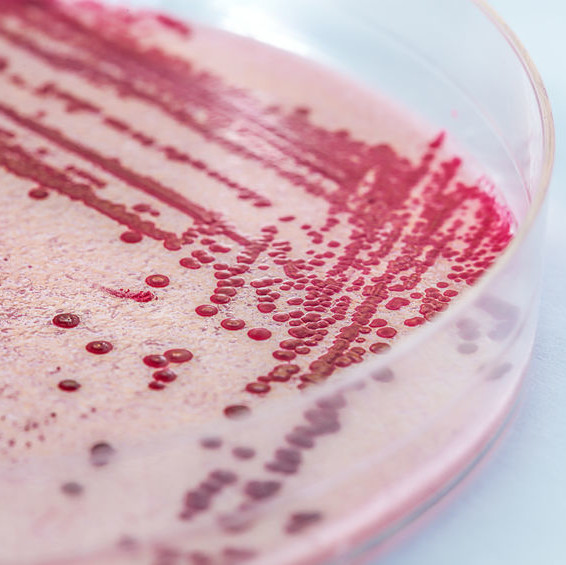
Listeria
Also known as Listeria monocytogenes, L.m.
What is Listeria?
Listeria is a Gram positive, non-spore-forming motile foodborne pathogen. L.m. is a serious biological hazard that is often addressed by food processing operations to prevent foodborne diseases.1
Listeria has been found in food products, such as:
- Poultry products
- Milk and dairy products
- Refrigerated fresh produce
- Ready-to-eat food (RTE)
- Hot dogs
Relevance
Listeria is considered a major threat to public health. Furthermore, it’s a challenge to the food industry. Particularly, for ready-to-eat food manufacturers. As consumers demand less processed and more natural, ready-to-eat food, the threat of L.m. increases.2
A L.m. or Listeriosis infection can be a relatively mild illness. However, the ability of the pathogen to cross the epithelial-barrier of the intestinal tract, the blood-brain barrier and the feto-placental barrier can result in severe illnesses. Infection can be a serious hazard, particularly for high-risk groups such as the elderly and immunocompromised individuals. It may result in up to 30% mortality rate.2
The FDA considers Listeria one of the most common and severe pathogens.3
Sources of listeria
L. m. is widely dispersed in the environment. It is found in soil, animal manure, water, and plant material. It can even grow under refrigeration temperatures, at pH 4.7 and 10 % salt.1,2,4
This pathogen can persist in harsh food processing conditions, where it can contaminate food. Also, L. m. can be carried without symptoms by humans and animals. With the lack of cooking or other kill steps, L. m. can persist in ready-to-eat food. If conditions are favorable, it can grow to numbers high enough to cause infection.1,2
Controlling listeria in food processing
- Prevention of re-contamination: Contamination with Listeria after processing (CCP) and before packaging may occur if processing conditions are not controlled properly.
- Specifications for ingredients: Bakeries must establish microbial specifications, absence/presence and limits for different microorganisms. These should be communicated in ingredients spec sheets.
- Ingredients suppliers: A certificate of analysis (COA) that confirms the absence of listeria should always accompany shipments or batches of an ingredient sent to the bakery.
- Prevention of biofilm formation: Listeria can become a big issue in improperly cleaned stainless steel closed systems. For example, piping, pumps and tanks. Listeria within a biofilm can be 1,000 times more resistant to sanitizers when compared to its freely dispersed form in solution. CIP cycles may not be enough to remove the tightly adhered biofilm that bacteria colonies create. This situation may cause a recurrent contamination scenario.4
- HACCP plan
- Hazard analysis: Listeria must be first identified as a potential hazard within the operations involved in food production.
- Environmental monitoring: it is crucial to verify all prerequisite programs are running as expected and properly addressing Listeria in the HACCP plan. Cleanliness indicators such as APC (average plate count), yeast and mold, E. coli, Listeria and Salmonella are typically run.
- Microbiological sampling plan/program: Includes environmental monitoring and drain sampling, periodic sampling for raw materials and finished products and routine microbiological testing. Results should verify that prerequisite programs and cleaning procedures and GMP procedures are working properly.
- CCP (critical control points): Thermal processing like pasteurization, sterilization, baking and frying are kill steps that can eliminate Listeria pathogen. Also, other technologies like high-pressure, dielectric heating, ultrafiltration and UV radiation work as well.
References
- Magalhães, R. “Listeria monocytogenes.” Encyclopedia of Food Safety, Volume 1, Academic Press, Elsevier, Inc., 2014, pp. 450–461.
- Jordan, K., Leong, D., and Álvarez Ordoñez, A. Listeria monocytogenes in the Food Processing Environment, Springer Cham Heidelberg New York Dordrecht London, 2015, pp. 1–80.
- De Rovira, D. “P.” Dictionary of Flavors, 3rd edition, John Wiley & Sons Ltd, 2017, p. 224.
- Marriott, N.G., Schilling, M.W., and Gravani, R.B. “Sanitation and the Food Industry.” Principles of Food Sanitation, 6th edition, Springer International Publishing AG, 2018, pp. 1–17.

